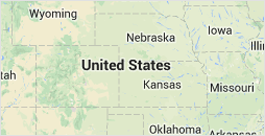Barry Kinson
PHONE NUMBER : --------------------
Map

How To Secure Your Wireless Network (In Just Few Minutes)?

The threat of wireless network breaches is increasing. It is important that people get serious about the security of their home and office networks.
According to a report, 25 percent of the world's households have wireless connections. And more than 49 percent of these connections are unsecured. No wonder, 1 million people become victims of cyber crime every day (Yes, read that again!).
With the passing days, the world is seeing more of network security breaches, thanks to easy accessibility to powerful hacking tools like AirCrack and coWPAtty. While some of these infringes are likely from the next-door neighbors seeking free internet, others are potentially more harmful.
This makes it rather imperative for households to take right measures to dwarf-off such threats and keep their personal online data safe. They must pay just as much of attention on security end as they do when choosing the best from wireless internet packages.
Unsurprisingly, the counters aren't too difficult to implement. The steps are rather easy and take only about few minutes of the day.
Here are few steps how one can protect their home and office wireless network:
1. Create a unique password
80 percent of households still have their routers set on default password. So if you're trying to hack in your friends' router, chances are 'Admin' 'Password' or 'Miniap' can do the trick for you.
Change the password as soon as you've logged into the router. Keep it long enough, strong (mix-match of numbers, alphabets and special characters), unpredictable and unique. You can do this in your administrator's setting.
2. Change your wireless network name
Also known as SSID (Service Set Identifier), changing the name of your wireless network will make it hard for the hackers to identify the kind of router you're using, which will make the network a lot less hackable. Avoid common names, like your own name or dog's. Keep away from provocative names like "Get the he*k off" too.
3. Enable Network Encryption
Wireless networks come with different encryption methods like WEP, WPA and WPA2. WPA2 has its own variants, like AES and TKIP. Avoid WEP-it's a very basic encryption that can be breached using advanced infrastructure. WPA2 AES is highly secure and a standard now (it isn't fool-proof though). If you router doesn't have this option, update your hardware.
4. Limit the range of your wireless signal
Why do you need a wide network range when you require internet just in your room?! The less the range of network reach, the better! It is always advisable to place the router in the middle of your house. Avoid displaying it like a trophy. Don't place it near windows. If possible and want added security, wrap the router in a foil. If it can't be intercepted, it can't be hacked. Simple.
These are 4 simple steps to secure your wireless network at home and office. Of course, none of these guarantee you 100 percent security. As the world progresses, there will always be loopholes. So, one must always be on alert to protect their personal data through right measures.
Author Resource:
This article is written by Barry Kinson. He has got into writing professionally and uploads regular informative articles. You can refer to the articles and the information put down by him and clears your doubts on high speed internet. You may also visit internet services plans blog.
